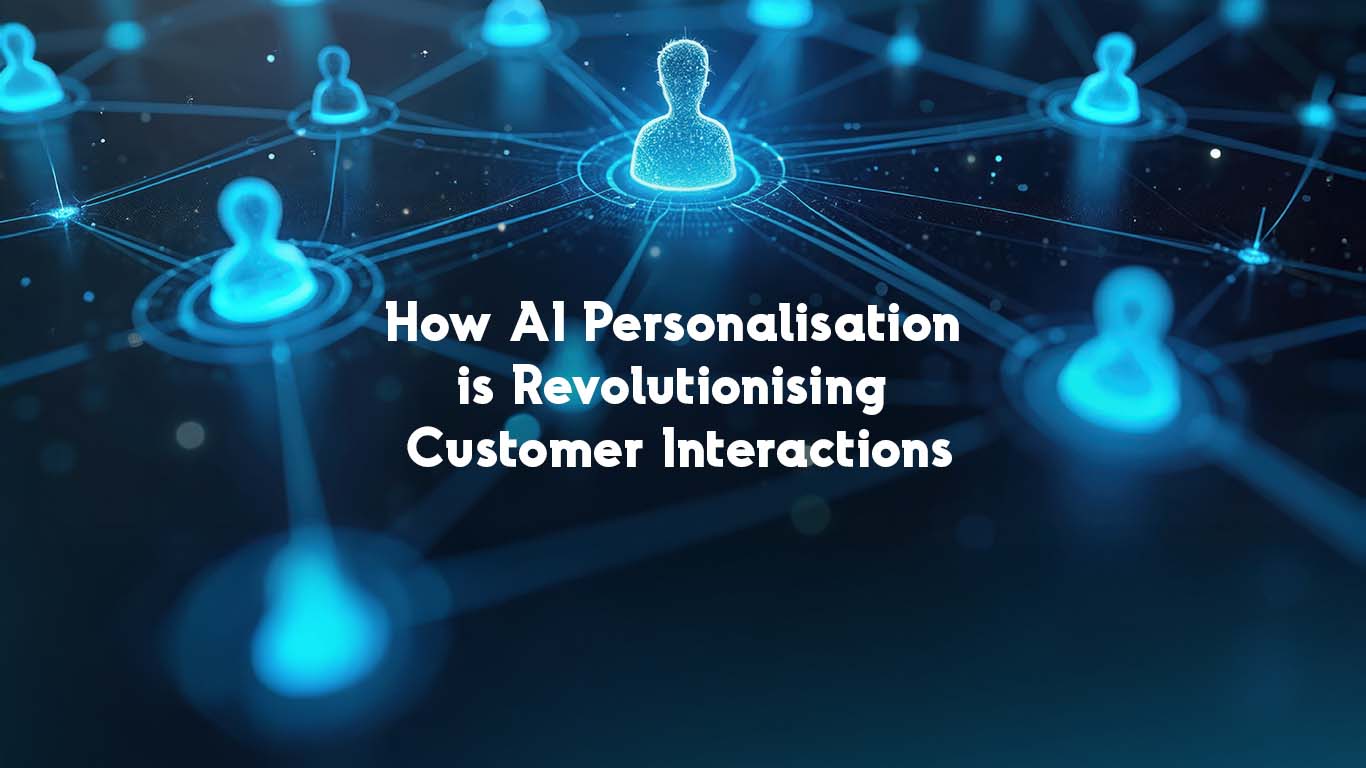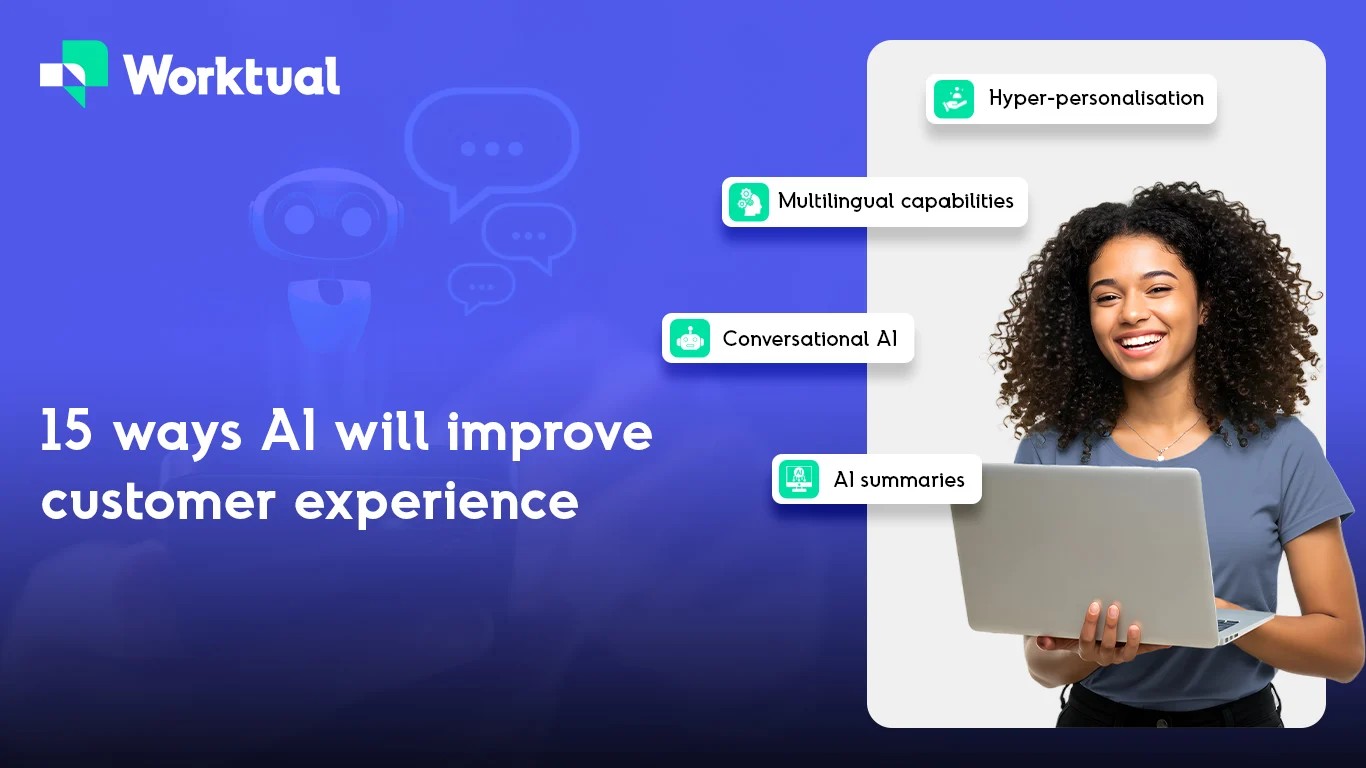How is conversational AI superior to chatbots?

Would you ever try holding a conversation with a vending machine? This is where the debate of conversational AI vs chatbot begins. You press a button, get a predefined result, and that’s the end of it.
But, recently, we’ve evolved from this button-based system to AI that listens, learns, and responds like a human.
Conversational AI has been refined through years of research. This shift feels like moving from a paper map to a real-time GPS with voice guidance. The new adaptable conversational AI adapts to human needs, serving them better.
What is a conversational AI chatbot?
A conversational AI chatbot is built using LLM, NLP, and ML capabilities, making it a better version of traditional chatbots. It understands natural language, grasps the context, and responds empathetically to each person chatting with it.
The AI models help conversational AI chatbots understand the sentiment, language, and purpose, and don’t rely only on scripts to serve customers.
Unlike traditional chatbots, the real difference in conversational AI vs chatbot is that conversational AI goes the extra mile by continuously learning from your business data. It automatically learns from your website content and understands past complex issues handled by agents when you integrate it with your website and other internal systems like CRM. As a result, it provides accurate and timely responses that fully address customer queries.
Think of reading lines off a teleprompter versus speaking from the heart. Conversational AI chatbots don’t just regurgitate what you fed them. They engage, adjust, and adapt on the go, creating a fluid, helpful experience.
What’s the difference between conversational AI and chatbots?
When looking at conversational AI vs chatbot, one of the major differentiators is the ability to understand. Chatbots are like a horse with full-cup blinkers – they operate on a fixed path. They wait for specific inputs and respond immediately.
Think of them like digital assistants following a checklist. They can process straightforward requests, but often end up giving useless, repetitive answers when interactions stray from context.
On the other hand, conversational AI works like a seasoned customer service professional. It remembers your last visit, understands when you’re in a hurry, and adapts its tone in correspondence.
It gets the overall picture of the conversation and where it is heading using the context and language. This capability allows conversational AI to make every interaction feel more personal and natural.
How is the tech different?
From the ground up, conversational AI vs chatbot technologies are built differently. When you turn flowcharts into code, it becomes a chatbot. They work within the if-this-then-that logic, and they stick to it strictly. Routine queries can be managed with this, but it falls short when the conversation gets complex.
Conversational AI puts multiple AI models together to deliver a natural, human-like experience. Imagine it like a psychologist, translator, and researcher combined into one. It doesn’t look for keyphrases and trigger responses. It interprets the intent, remembers past conversations, and learns from every conversation.
How does conversational AI deal with complexity?
Rule-based chatbots are good at ticking boxes. They can track orders, route customer chats to the right department, and do basic troubleshooting like resetting passwords. Anything outside their script, it simply doesn’t care. They’re like conveyor belts in a factory executing one simple task efficiently, but rigid when flexibility is needed.
Meanwhile, conversational AI handles complexity with ease. It can continue past conversations with context, handle multiple conversation pathways, adapt responses based on user input, and even identify when a customer changes their mind midway.
A better user experience
It’s just another bot that doesn’t understand what I say – this is the feeling the users get while using a chatbot. With chatbots, you get stiff, repetitive responses that could be frustrating, as you have to rephrase your query multiple times just to be understood. It often feels like a tourist with a phrasebook who knows how to say a few things in a foreign land.
However, conversational AI responds in a way that feels more human. It understands your emotions and matches its tone to comfort you. It can identify whether you’re confused or annoyed and drive the conversation gently towards a solution.
Types of conversational AI
Conversational AI chatbots come in different forms. Some work through chat, others through voice or as virtual assistants, each helping users in their own way.

Conversational AI chatbots
Conversational AI chatbots have grown in prominence in recent times. Unlike the regular bots, they fully understand the meaning and intent, even when there’s a typo or error in the customer’s messaging.
So your customers don’t have to remind them about past conversations. It can recall previous interactions, maintain a thread of conversation, and change course when needed.
You can find yourself interacting with one while troubleshooting your broadband or checking your bank balance. They’re built to handle queries that aren’t straightforward and require some level of expertise to serve.
Virtual assistants
Virtual assistants are just like your personal secretary. They have impeccable memory and a touch of personality. You can automate appointment bookings, add reminders, and even get smart suggestions based on your daily habits.
They go beyond answering queries and start anticipating them. A well-designed virtual assistant sorts tasks and responds to the user should they have doubts, making life smoother across both personal and professional contexts.
Voice assistants
Instead of typing out your feelings, it feels better when you speak them out. Voice assistants understand your speech, not just text. Users can give commands to the voice assistants on the go or ask questions, and have them search the web or a knowledge base to provide answers.
You can find these assistants on your smartphones, speakers, and cars. The experience is hands-free and designed for quick access.
Voice assistants don’t complain about accent variations, conversation fillers, or background noises. It feels like talking to someone while down a busy lane and still being understood clearly. Though the complexity is high, the potential for ease of use is even higher.
Areas where conversational AI outperforms chatbots
- Adaptability and learning: Chatbots are like words set in stone. They repeat what they’ve been told. Conversational AI adapts, learns, and grows with your business. If chatbots are tape recorders, then conversational AI is a student.
- Contextual understanding: It doesn’t get triggered when it hears a key phrase. It understands the intent and recollects what you meant the last time. By connecting these dots, conversational AI gives smoother, more accurate answers.
- Lower customer service cost: While both can reduce agent workload to some extent, conversational AI goes the extra mile and does it with finesse. It resolves regular and complex queries and escalates only critical issues to the agent, leading to happier customers and fewer support tickets.
- Increased agent productivity: While AI handles repetitive tasks, agents focus on issues that require a human touch. It’s like creating email filters to sort your inboxes so you can focus on important emails.
- Better data collection: Conversational AI listens and learns. It identifies patterns, highlights customer needs, and enables smarter decision-making.
- Scalability: As you expand globally, the ability to handle tickets at scale without compromising quality is crucial for your growth. Conversational AI scales like a well-trained team, always ready, always sharp.
A smarter way forward with conversational AI
Conversational AI is not a random change that businesses are embracing. It represents a transformation in how you interact with customers across various touchpoints. It overcomes the limitations of regular chatbots by replacing them with flexibility, intelligence, and empathy. In a world where everything is on-demand, it delivers just that.
Customer get on-demand answers to their queries regardless of their journey stage with you.
Businesses evaluating conversational AI vs chatbot must look beyond cost and speed—they need to consider long-term experience and customer satisfaction. Choosing between the two is no longer about price or speed. It’s about experience, accuracy, and connection.
And conversational AI wins on all counts.
Experience the difference with Worktual, your gateway to truly intelligent conversational AI.
What is Worktual?
Free your team from repetitive questions
Worktual helps you slash support costs by 60% while improving response speed and accuracy.
See it in actionRelated Posts

Top 5 business benefits of using conversational AI agents
Repetitive queries flood your support teams’ inboxes. On top of it, clunky systems prevent even your best agents from meeting customer expectations, i.e., getting faster replies. These problems don’t stop at creating delays. They bring down your team’s morale, increase response times, and lead to inconsistent service.

How AI Personalisation is Revolutionising Customer Interactions
Struggling to keep up with evolving customer expectations? You’re not alone. Customers demand personalised experiences, quick responses, and seamless interactions across touchpoints. As traditional marketing and customer engagement strategies couldn’t fulfil this expectation, businesses are unable to close deals, and frustrated customers are switching to competitors.

15 ways AI will improve customer experience in 2026
Meeting expectations = satisfied customers. Sounds simple, right? In reality, it’s anything but simple.

